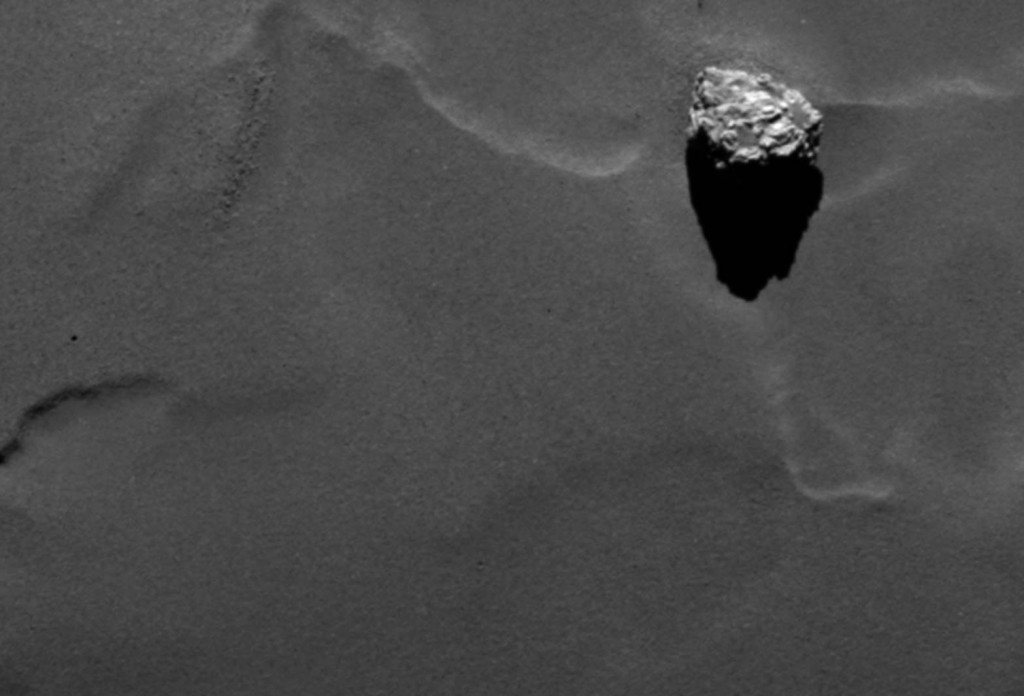ESA uploaded a photo of a “boulder” on the surface of comet Churyumov-Gerasimenko

The day of the Philae probe landing on the comet Churyumov-Gerasimenko is getting closer, the date is November 12, it is on this day that the landing will be carried out, many are waiting. Nevertheless, very active work is being carried out now, the interplanetary station Rosetta constantly photographs the comet, takes various measurements, and sends the received data to Earth.
Unlike NASA, the European Space Agency publishes many photos with a long delay. So, for example, one of the most interesting photos of the comet's surface, taken from a distance of 28.5 km, was posted only now. This photograph is noteworthy in that it has many details of the surface of the comet, including a conglomerate of huge boulders.
Few people would be interested in boulders in general if they were not formations on a comet, and these formations are very large. That boulder, which is visible in the announcement photo, has a size of about 45 meters. This object seems to be a boulder in the photograph; rather, this formation can be called a rock. This photograph is probably one of the first where the surface of the comet can be seen so well.
The conglomerate of boulders reminded scientists of the Egyptian pyramids, and of the largest of them - the pyramid of Cheops. The rock in question was named Cheops (this pharaoh, also known as Khufu, lived in 2550 BC).
In general, the participants of the Rosetta mission have now agreed on the principle of naming new objects - they will be called using the names of famous Egyptian rulers, priests, gods and other figures.
Cheops (this time referring to a boulder) was first seen in August photography, when Rosetta only approached the comet. After some time, the station was able to take very good photos from a closer distance (the OSIRIS tool was used - by the way, this abbreviation coincides with the name of one of the most famous Egyptian gods), the resolution of the photo is 50 centimeters per pixel.

The photo was taken on August 6, from a distance of 130 kilometers
Boulder-shaped objects, in general, are characteristic of the comet Churyumov-Gerasimenko, they were found in many places. But Cheops stands out among other objects of this kind: it is a “loner,” and its color is lighter than that of other “boulders,” and lighter than the surface of a comet.
Now astronomers are trying to understand what “boulders” are. What are they made of? What are their physical properties, including density? How did they come about? Let's hope that over time, scientists will receive answers to all these questions, and after them we will receive complete information about the comet, its structure and origin.
It is worth recalling that today Rosetta will approach a comet at a distance of 10 kilometers.
Via esa
